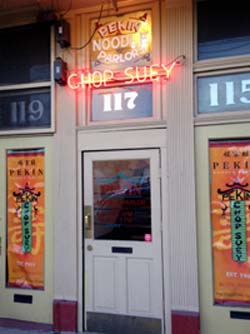
Anselmo Mine Headframe, Butte, Montana
I am always on the lookout for places where I can still feel the past, so it is not surprising that I lost my heart to Butte, Montana. I found the past completely present and accessible in Butte. In the late 19th and early 20th centuries, the town was the world’s most important source of copper ore, then mined underground by men who came here from around the globe to blast, extract, and backfill the tunnels that honeycomb beneath Butte. I spent a week in Butte last summer doing research for my next book, Looking For Betty MacDonald: The Egg, The Plague, Mrs. Piggle-Wiggle And I, due out fall 2016 from University of Washington Press.
Betty Bard MacDonald spent much of her childhood in Butte before moving to Seattle in 1916. All of the houses where her family lived still stand. Butte’s underground mining industry has now been inactive for more than half a century. The Berkeley Pit, a massive strip-mining operation, consumed Butte’s Italian Meaderville and McQueen neighborhoods and about half of the surface ground where many of Butte’s mining headframes once gave access to underground mines. The Pit is now Montana’s deepest aquatic body, a 900 foot deep lake of highly mineralized water. Butte is the nation’s largest Superfund project, and one of the largest designated National Historic Districts in the United States. Although far less populated than it was in Betty’s day, Butte is no less complex.
Luckily for me, the Bards’ West Side neighborhood is still intact. I wandered through the campus at Montana School of Mines (now Montana Tech) where Betty’s father Darsie Bard taught, and into McKinley School (now used as a church), where she and her sister Mary and brother Cleve learned to read and write. Headframes — architectural ruins, gorgeous in their way — still mark the Anselmo and Orphan Girl mines, both fixtures of the Bards’ neighborhood. All this survival seems remarkable when one acknowledges how much of Butte — homes, schools, churches, mines, the Columbia Gardens amusement park where the Bard children sometimes played — has been consumed by the Berkeley Pit.

Pekin Noodle Parlor, Butte, Montana
I got tremendous help at the Butte-Silver Bow Public Archives on Quartz Street, where I paged through the Butte City Directories, used the birth and death records, and appreciated their collection of actual rather than microfilmed historic newspapers. I love archival research, and this facility is one of the best I’ve ever visited. For details of Butte’s past, it’s one stop shopping.
Silver Bow County’s former historic preservation officer gave me a golf cart Butte Urban Safari Tour of the city, fleshing out the skeleton body of research I’d tacked together. I took the World Museum of Mining’s underground mine tour, and was guided through the fascinating Dumas Brothel Museum (nothing young Betty would have been allowed to see).
People in Butte gave me varying advice about the food at the Pekin Noodle Parlor, where I ate dinner my first night in town. The restaurant has been serving for more than 100 years, which meant it was in business when the Bards lived in Butte. That fact plus their great neon sign charmed me, and I climbed narrow stairs to the second floor. Pekin’s entrance made me think of speakeasies. I ate tofu and rice in a booth that could be closed off with a little curtain. Talk about atmosphere!
I stayed one night at the William Andrews Clark Copper King mansion. If you’ve read the terrific Huguette Clark biography Empty Mansions, this is a mandatory stop. Most of my stay was in an apartment in the historic Metals Bank. The doctor who took care of the Bard family had his office there, back in the day.
I couldn’t stop thinking about Butte when I got back to Seattle. Serendipitously, the Irish-American band Solas also fell under Butte’s spell and recorded an album full of Butte tales called Shamrock City. They made a video of one of the songs in the headhouse of the Anselmo Mine near the house where Betty’s family lived the longest. After six months, I still find myself playing the album constantly.
February 20, 2015

